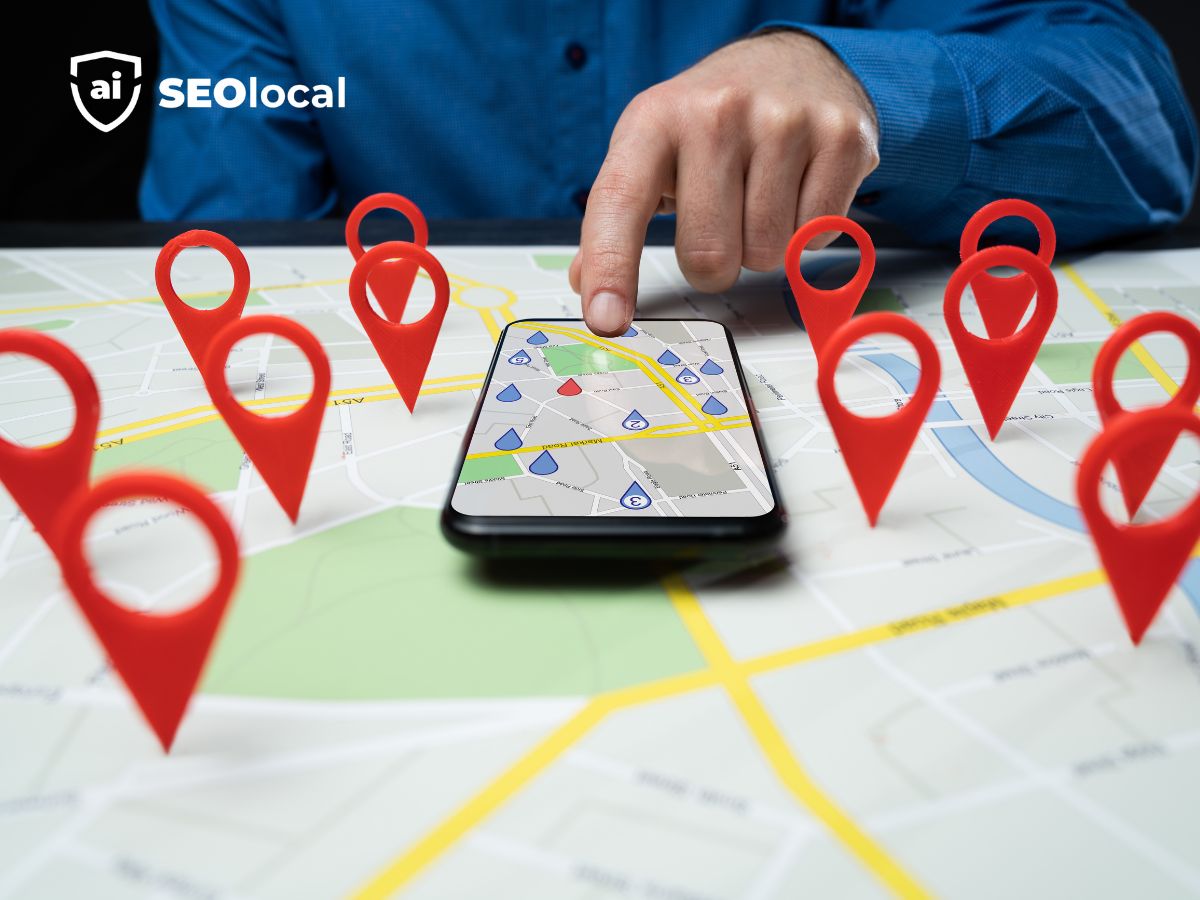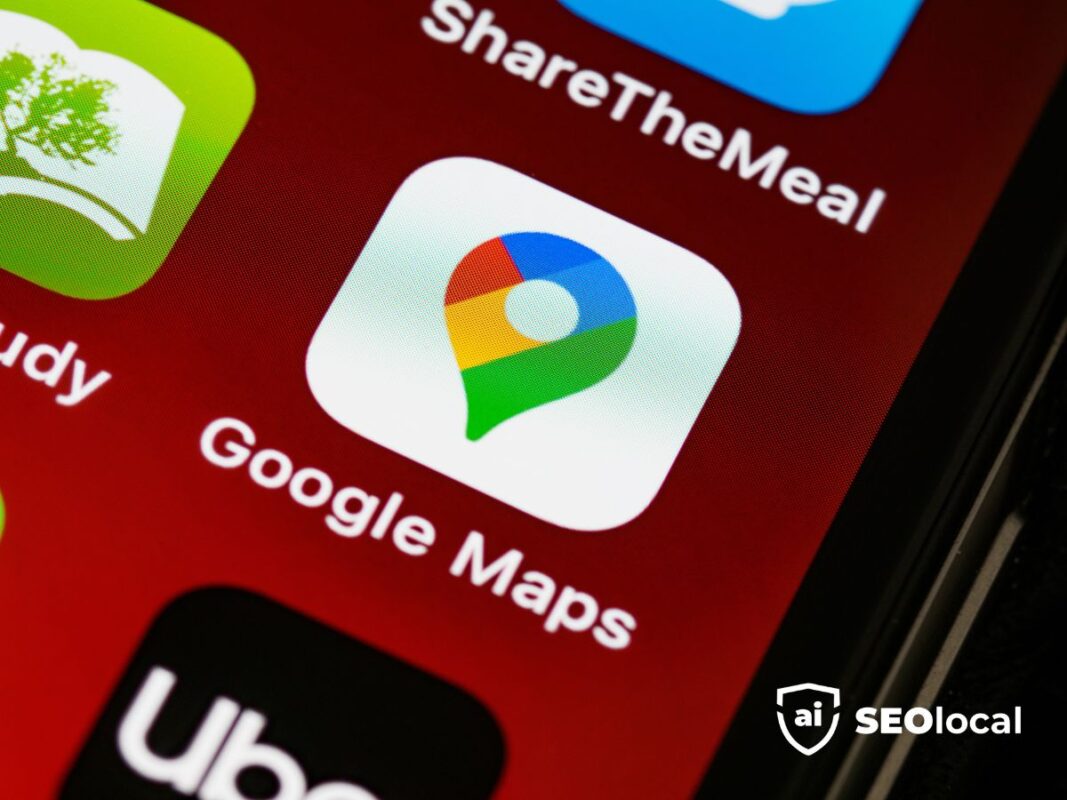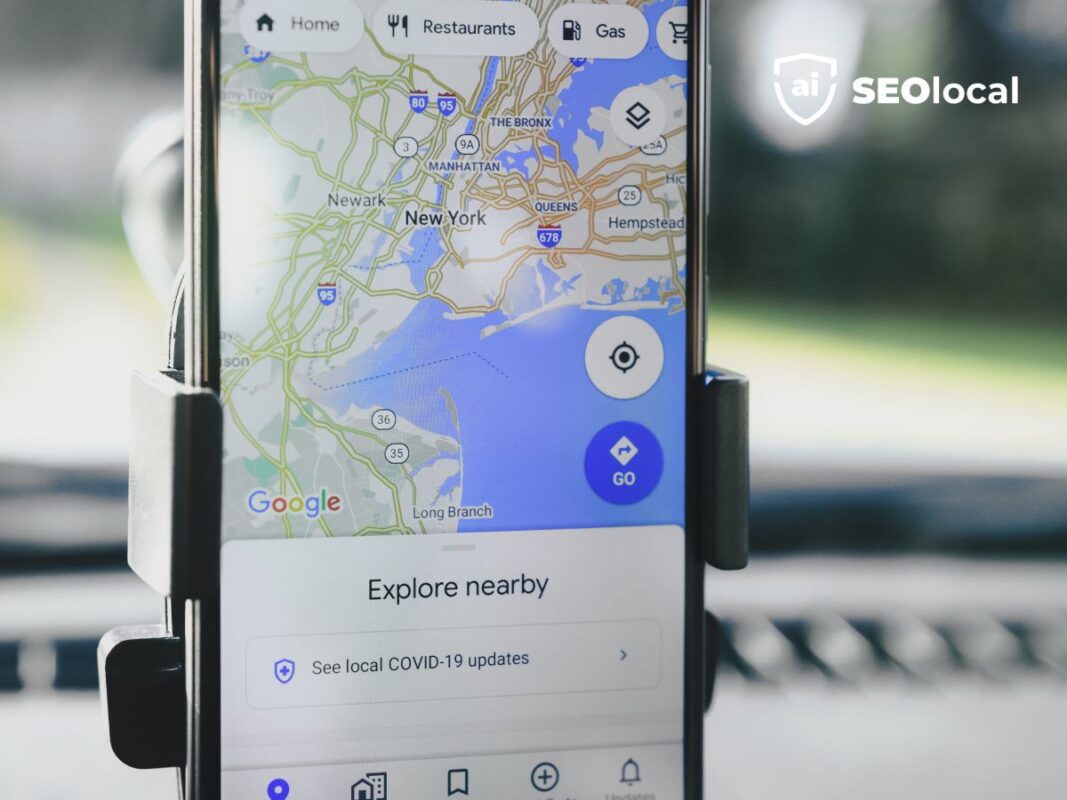- Advanced Local SEO Strategies
- Fundamentals of Local SEO
- Google Business Profile (GBP) Optimization
- Local Keywords and Content Strategy
- Local Link Building
- Local Paid Advertising
- Local Search Ranking Factors
- Local SEO Best Practices
- Local SEO Tools and Analytics
- Local Social Media Marketing
- Online Reviews and Reputation Management
- Technical SEO for Local Businesses
Google Business Profile Optimization Tips

Did you know that while there are 167 billion monthly searches, the average Business Profile only gets 1,260 views per month? Even more surprising, less than 5% of those views result in any action. This gap between search volume and engagement is a missed opportunity for many.
Your online presence matters more than ever. A well-optimized profile can significantly boost your visibility and conversions. Yet, many profiles remain incomplete or underutilized, leaving potential customers to choose competitors instead.
This article will guide you through 13 actionable strategies to improve your profile’s performance. From enhancing your listing details to leveraging customer reviews, these steps will help you stand out in local search results. Let’s turn those views into meaningful actions.
Key Takeaways
- There’s a significant gap between search volume and profile engagement.
- Complete profiles outperform competitors in search results.
- Optimizing your listing can improve local search performance.
- Less than 5% of profile views result in customer actions.
- Actionable strategies can boost visibility and conversions.

Google Business Profile Optimization
Your online presence starts with a strong foundation in local search results. A well-structured profile can significantly impact your visibility and engagement. Let’s break down what makes a profile effective and how you can optimize it.
A Google Business Profile is a dynamic snapshot of your listing on search engine results pages (SERPs). It’s the first thing potential customers see when they search for your services. This public-facing tool is different from the Google My Business dashboard, which is used for managing your profile.
Your profile includes several key components: photos, posts, Q&A, and messaging. Each plays a vital role in attracting and engaging customers. For example, high-quality photos can showcase your products or services, while posts keep your audience informed about updates or promotions.
During the COVID-19 pandemic, a temporary feature allowed businesses to share crisis-related updates. This highlighted the importance of staying adaptable and responsive to customer needs.
With 82% of local searches happening on smartphones, mobile-first optimization is crucial. Ensure your profile is easy to navigate and visually appealing on smaller screens.
| Component | Purpose |
|---|---|
| Photos | Showcase your products, services, and location. |
| Posts | Share updates, promotions, and events. |
| Q&A | Answer customer questions directly on your profile. |
| Messaging | Enable direct communication with potential customers. |
Why Optimizing Your Google Business Profile Matters
Local search visibility is critical for attracting nearby customers. With 84% of views coming from discovery searches, your listing is often the first interaction potential customers have with your brand. A well-maintained profile ensures you don’t miss out on these opportunities.
One trend impacting traffic is the rise of zero-click searches. Many users find what they need directly in search results, bypassing websites. A complete profile can capture 520% more calls, according to BrightLocal. This makes it essential to keep your listing updated and engaging.
Local pack rankings are influenced by three key factors: proximity, relevance, and completeness. Proximity ensures you appear in searches near your location. Relevance matches your services to user queries. Completeness means filling out every section of your profile.
Features like booking and reservation options can significantly boost conversions. These tools make it easier for customers to take action directly from your listing. Additionally, displaying attributes like “outdoor seating” or “wheelchair accessible” gives you a competitive edge.
- Zero-click searches reduce website traffic but increase profile interactions.
- Complete profiles drive more calls and customer inquiries.
- Local pack rankings depend on proximity, relevance, and completeness.
- Booking features enhance conversion rates.
- Attributes highlight unique offerings and improve competitiveness.
Claim and Verify Your Google Business Profile
Taking control of your online listing starts with claiming and verifying it. This step ensures your information is accurate and visible to potential customers. Without verification, your listing may not appear in local search results, costing you valuable opportunities.
To claim your listing, visit google.com/business and follow the step-by-step process. You’ll need to provide your business name, phone number, and address. Consistency in address formatting is crucial—use “St” instead of “Street” to match other directories.
Verification can be done via postcard or phone. The postcard method is more common and involves receiving a code at your listed address. Phone verification is faster but not available for all businesses. If you encounter issues, reach out to @GoogleMyBiz on Twitter for support.
Unverified listings can hurt your local rankings. They may also lead to incorrect information being displayed. Troubleshooting verification problems through official channels ensures your listing remains accurate and trustworthy.
Maintaining NAP (Name, Address, Phone) consistency across all directories is essential. Inconsistent information can confuse customers and harm your credibility. Verified listings with accurate details are more likely to attract and retain customers.
- Claim your listing at google.com/business.
- Choose between postcard or phone verification.
- Ensure address formatting matches other directories.
- Unverified listings can negatively impact rankings.
- Maintain NAP consistency for credibility.
Complete Every Section of Your Profile
Filling out every section of your listing is more than just a formality—it’s a strategy to attract and engage customers. A complete listing ensures you’re visible, credible, and ready to convert leads into loyal clients. Let’s explore the essential and additional sections you need to focus on.
Essential Information to Include
Start with the basics. Your legal name, physical address, and local phone number are mandatory fields. These details help customers find and contact you easily. For service area businesses, consider hiding your address and setting a delivery radius instead.
Adding product or service listings with transparent pricing can also boost trust. Customers appreciate knowing what to expect before reaching out. This level of detail can set you apart from competitors.
Additional Sections to Fill Out
Don’t overlook the power of extra features. Category-specific options like reservation buttons can streamline customer actions. For example, restaurants with online booking options see higher engagement rates.
Maintaining the Q&A and posts sections is equally important. Regularly updating these areas keeps your listing fresh and relevant. Responding to questions and sharing updates builds credibility and encourages customer interaction.
Did you know that 64% of users rely on listings to verify contact information? A complete profile can also increase direction requests by 2.7x. These stats highlight the importance of thoroughness in your listing.
| Section | Purpose |
|---|---|
| Legal Name | Ensures customers can identify your brand. |
| Physical Address | Helps customers locate your business. |
| Local Phone | Provides a direct line for inquiries. |
| Q&A | Answers customer questions in real-time. |
| Posts | Shares updates and promotions. |
Craft a Compelling Business Description
Your description is the first impression potential customers have of your brand. It’s a chance to showcase what makes you unique and why they should choose you. Keep it concise, engaging, and packed with value.
Start by repurposing your About Us content. Highlight your mission, values, and key offerings. Focus on the first 250 characters, as this is what appears in search snippets. Make it count.
Integrate keywords naturally to improve visibility. Avoid stuffing, as it can harm readability and compliance with editorial guidelines. Use terms that reflect your services and resonate with your audience.
Differentiate yourself from competitors by emphasizing your unique value propositions. What sets you apart? Whether it’s exceptional customer service or innovative solutions, make it clear.
Write with a mobile-first approach. Most users view listings on their phones, so keep sentences short and easy to read. This ensures your description is accessible and engaging across devices.
| Element | Best Practice |
|---|---|
| First 250 Characters | Include key information to capture attention. |
| Keyword Integration | Use relevant terms naturally for better visibility. |
| Unique Value | Highlight what makes you stand out. |
| Mobile-First Writing | Keep sentences short and easy to read on small screens. |
| Compliance | Avoid HTML, links, and promotional language. |
By following these steps, you’ll create a description that not only attracts attention but also drives action. Make it clear, compelling, and customer-focused.
Select the Right Categories and Attributes

Choosing the right categories and attributes can make or break your local search visibility. With over 3,000 category options available, it’s essential to pick the ones that best represent your offerings. Start by selecting a primary category that accurately reflects your core service or product. Secondary categories can then be used to highlight additional specialties.
Be cautious about stacking irrelevant categories. This practice can lead to penalties and reduce your credibility. Stick to categories that genuinely align with what you provide. For example, a coffee shop shouldn’t list itself under “car repair” just to appear in more searches.
Attributes are another powerful tool. They allow you to showcase specific features, like “good for laptop workers” or “wheelchair accessible.” These details not only improve your ranking but also help users filter results based on their needs. Voice search and mobile users often rely on these attributes to find businesses quickly.
Editing your categories or attributes may trigger a verification process. This ensures your listing remains accurate and trustworthy. Keep an eye on your email or dashboard for any verification requests.
Finally, the right categories and attributes significantly impact discovery search visibility. When users search for services without a specific business in mind, a well-optimized listing can stand out. This increases your chances of being discovered by potential customers.
- Choose a primary category that reflects your core offering.
- Avoid irrelevant category stacking to prevent penalties.
- Use attributes to highlight unique features for voice and mobile searches.
- Be prepared for verification when editing categories or attributes.
- Optimize for discovery searches to attract new customers.
Add High-Quality Photos and Videos
Visual content plays a crucial role in capturing attention and driving engagement. Studies show that listings with 100+ photos receive 1,065% more website clicks. This highlights the importance of showcasing your offerings through high-quality visuals.
Photos and videos also improve your visibility in search results. Users are more likely to click on listings with compelling visuals. Consider adding 360º photos using the Street View app to give customers an immersive experience of your location.
To keep your listing fresh, establish a weekly upload schedule. Regular updates signal to algorithms that your listing is active and relevant. Geo-tagging your photos is another best practice, as it helps users locate your business more easily.
When creating visuals, adhere to minimum image specs of 1200×900 resolution. Tools like Canva can help you design before/after collages that highlight your work. For videos, keep them under 30 seconds and 100MB to ensure quick loading times.
| Visual Type | Best Practices |
|---|---|
| Photos | Use high resolution (1200×900), geo-tagging, and weekly uploads. |
| Videos | Keep under 30 seconds and 100MB for optimal performance. |
| 360º Photos | Use the Street View app for immersive experiences. |
Encourage customer reviews that mention your visuals. Positive feedback about your photos or videos can further boost credibility. By prioritizing high-quality visuals, you’ll create a listing that stands out and drives meaningful engagement.
Encourage and Manage Customer Reviews
Customer feedback is a powerful tool for building trust and credibility. Reviews not only influence purchasing decisions but also improve your visibility in search results. With 62% of people leaving reviews when asked, it’s essential to actively encourage feedback.
Integrate a loyalty program to motivate customers to share their experiences. Offer rewards or exclusive perks forleaving reviews. This approach fosters engagement while maintaining authenticity.
Use tools like Whitespark’s shortcut link to make leaving reviews easier. A direct link simplifies the process, increasing the likelihood of feedback. Share this link in emails, receipts, or social media posts.

Responding to reviews is equally important. Create templates for positive and negative feedback to save time while maintaining professionalism. Acknowledge positive reviews with gratitude and address concerns in negative ones constructively.
Monitor reviews using Google Alerts to stay updated. This allows you to respond promptly and address issues before they escalate. Regular monitoring also helps you identify trends in customer feedback.
Avoid offering cash incentives for reviews, as this violates guidelines. Instead, consider discounts or small perks as a thank-you gesture. This ensures compliance while encouraging participation.
- Use loyalty programs to generate reviews naturally.
- Implement Whitespark’s shortcut link for convenience.
- Respond to feedback with pre-written templates.
- Monitor reviews using Google Alerts for timely responses.
- Avoid cash incentives; opt for discounts or perks.
Utilize Google Posts for Engagement
Engaging your audience through regular updates can significantly boost your online presence. Posts are a powerful tool to keep your audience informed and interested. They allow you to share timely information, promotions, and events directly with your customers.
There are four types of posts you can use: What’s New, Event, Offer, and Product. Each serves a unique purpose. For example, “What’s New” is ideal for sharing updates, while “Offer” highlights discounts or special deals.
Posts have a 7-day lifespan, so it’s important to update them regularly. To maximize their impact, optimize the carousel feature. This allows multiple active posts to be displayed, increasing visibility and engagement.
Strategically place calls-to-action (CTAs) based on the post type. For instance, use “Book Now” for events and “Shop Now” for product posts. This encourages users to take immediate action.
Track the performance of your posts using UTM parameters. This helps you analyze which posts drive the most traffic and conversions. Integrating Maps into your posts can also generate foot traffic by highlighting your location.
Design your posts with a mobile-first approach. Most users access listings on their phones, so ensure your content is visually appealing and easy to read on smaller screens.
| Post Type | Purpose |
|---|---|
| What’s New | Share updates and announcements. |
| Event | Promote upcoming events or activities. |
| Offer | Highlight discounts or special deals. |
| Product | Showcase new or featured products. |
By leveraging these strategies, you can create engaging posts that drive customer interaction and enhance your online presence. Regular updates and thoughtful design ensure your audience stays connected and informed.
Set Up Messaging for Direct Communication
Setting up messaging allows you to connect with your audience instantly. With 92% of millennial smartphone users relying on local searches, direct communication is more important than ever. Messaging features enable real-time interactions, making it easier for customers to reach you.
Response time is critical. Aim to reply to messages within an hour to maintain customer satisfaction. Customize your messaging hours to align with your operating schedule. This ensures you’re available when your customers need you most.
Integrate messaging with your CRM system to streamline communication. This helps you track conversations and manage customer relationships effectively. Additionally, set up spam prevention protocols to filter out irrelevant messages.
Auto-reply configurations can save time while keeping customers informed. Use them to acknowledge receipt of messages or provide quick answers to common questions. This feature ensures no customer feels ignored, even during busy periods.
- Reply within an hour to maintain customer satisfaction.
- Customize messaging hours to match your availability.
- Integrate with CRM systems for efficient tracking.
- Set up spam filters to avoid irrelevant messages.
- Use auto-replies to acknowledge and assist customers promptly.
Monitor and Update Your Profile Regularly
Keeping your listing updated ensures it stays relevant and effective. Regular maintenance helps you stay ahead of competitors and keeps your information accurate. Here’s how to stay on top of it.
Start with a quarterly audit checklist. Review all sections, including photos, descriptions, and contact details. This ensures everything is up-to-date and aligned with your current offerings.
Pre-schedule holiday hours to avoid confusion. Customers appreciate knowing your availability during special occasions. This small step can enhance their experience and trust in your brand.
Refresh your photos regularly, especially during seasonal changes or renovations. Updated visuals keep your listing fresh and engaging. Use analytics to track which images perform best.
Leverage the insights dashboard to monitor performance. Track metrics like views, clicks, and customer actions. This data helps you identify areas for improvement and measure success.
Keep an eye on competitor listings. Analyze their strategies and identify opportunities to differentiate yourself. Staying informed about their updates can inspire new ideas for your own listing.
| Task | Purpose |
|---|---|
| Quarterly Audit | Ensure all sections are accurate and updated. |
| Holiday Hours | Pre-schedule availability for special occasions. |
| Photo Refresh | Update visuals to reflect seasonal changes or renovations. |
| Insights Dashboard | Track performance metrics for continuous improvement. |
| Competitor Tracking | Analyze competitors to identify opportunities. |
By monitoring and updating your listing regularly, you’ll maintain its effectiveness and attract more customers. Stay proactive to ensure your online presence remains strong and competitive.
Conclusion
Implementing these 13 strategies can transform your online presence and boost your visibility in local search results. Each step, from optimizing your listing to engaging with customers, plays a vital role in driving success. Remember, maintaining your business profile is an ongoing process that requires regular updates and attention.
At SEO Local, we specialize in helping businesses like yours maximize their potential. Our expertise ensures your listing stands out and attracts the right audience. If you need assistance, our team is just a message away. Reach out to us on WhatsApp for personalized support: WhatsApp Support.
Don’t wait—start implementing these strategies today to see immediate results. Your online success begins with taking action now.
FAQ
Why is it important to claim and verify my profile?
Claiming and verifying your profile ensures you have control over the information displayed. It also boosts your credibility and helps you appear in local search results.
What essential details should I include in my profile?
Make sure to add your name, address, phone number, website, and hours of operation. These details help customers find and contact you easily.
How can I make my description stand out?
Write a clear and engaging description that highlights your unique offerings. Use relevant keywords to improve visibility in search results.
Why are categories and attributes important?
Choosing the right categories and attributes helps Google understand your services. This improves your chances of appearing in relevant local searches.
How do photos and videos impact my profile?
High-quality visuals showcase your products and services. They also build trust and attract potential customers.
How can I encourage customer reviews?
Ask satisfied clients to leave feedback. Respond to reviews to show you value their input and improve your reputation.
What are Google Posts, and how do they help?
Posts allow you to share updates, promotions, and events. They keep your profile fresh and engage your audience.
Should I enable messaging on my profile?
Yes, messaging lets customers contact you directly. It’s a convenient way to answer questions and build relationships.
How often should I update my profile?
Regularly check and update your information to ensure accuracy. Add new photos, posts, and updates to keep it current.


